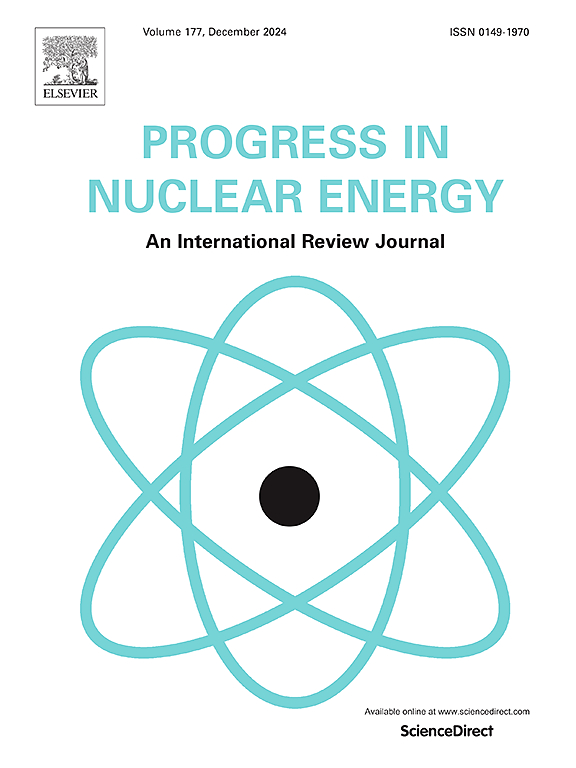Effect of interface control on pressurization deterioration and gas-phase distribution characteristics of a multistage mixed flow nuclear main pump
IF 3.3
3区 工程技术
Q1 NUCLEAR SCIENCE & TECHNOLOGY
引用次数: 0
Abstract
In case of emergencies such as loss-of-coolant accident (LOCA), high gas volume fractions (GVF) leads to severe pressurization deterioration and failure in mixed flow nuclear main pump (MFNMP), threatening nuclear engineering stability and safety. Two test methods and numerical simulation based on PBM model are used to study the effects of parameters including the interface condition, inlet GVF, rotational speed, and inlet pressure on the overall and inter-stage performance of the multistage MFNMP. The results show that the critical GVF of the pump at its rated rotational speed increases by 74.3 % compared to when pumping tap water by reducing the surface tension at the flow rate of 1.0 QBEP. With the increase of booster stage, the gas-phase distribution along the axis presents the characteristics of ‘single peak’ and ‘double peak’, indicating the great difference in the gas accumulation position inside different impellers. When the mass flow rate of the gas phase is small, although the pressurization of the MFNMP decreases with the increase of the liquid flow rate due to the intensification of flow separation, the amplitude of the decrease is smaller than the increase in pressurization amplitude resulting from the elimination of gas accumulation within the impeller. Therefore, the trend of distinct sudden rise in the pressurization curve is observed in the mapping test. Reducing surface tension significantly broadens the range of liquid flows that enable the pump to operate effectively at high pressures. A correlation equation considering fluid physical properties for predicting critical GVF for MFNMP pump is presented.
求助全文
约1分钟内获得全文
求助全文
来源期刊

Progress in Nuclear Energy
工程技术-核科学技术
CiteScore
5.30
自引率
14.80%
发文量
331
审稿时长
3.5 months
期刊介绍:
Progress in Nuclear Energy is an international review journal covering all aspects of nuclear science and engineering. In keeping with the maturity of nuclear power, articles on safety, siting and environmental problems are encouraged, as are those associated with economics and fuel management. However, basic physics and engineering will remain an important aspect of the editorial policy. Articles published are either of a review nature or present new material in more depth. They are aimed at researchers and technically-oriented managers working in the nuclear energy field.
Please note the following:
1) PNE seeks high quality research papers which are medium to long in length. Short research papers should be submitted to the journal Annals in Nuclear Energy.
2) PNE reserves the right to reject papers which are based solely on routine application of computer codes used to produce reactor designs or explain existing reactor phenomena. Such papers, although worthy, are best left as laboratory reports whereas Progress in Nuclear Energy seeks papers of originality, which are archival in nature, in the fields of mathematical and experimental nuclear technology, including fission, fusion (blanket physics, radiation damage), safety, materials aspects, economics, etc.
3) Review papers, which may occasionally be invited, are particularly sought by the journal in these fields.
 求助内容:
求助内容: 应助结果提醒方式:
应助结果提醒方式:


